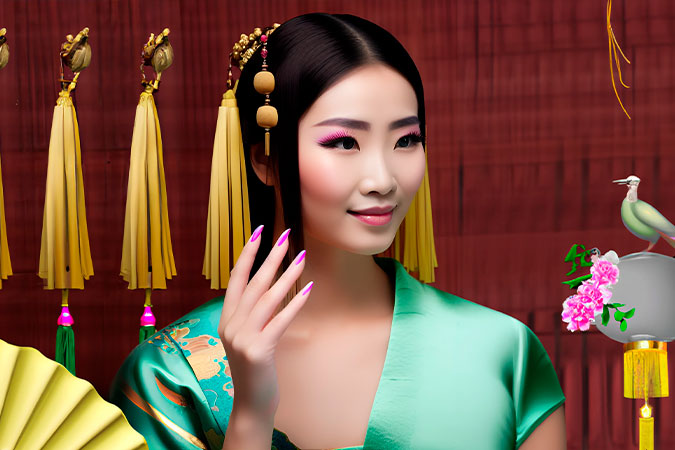The Chinese Contribution to Cosmetology: Nail Art and Social Status
This insightful article discusses the ancient Chinese contributions to the field of cosmetology, particularly focusing on nail tinting as an aesthetic practice and social status symbol. It explains how, during the Shang Dynasty (circa 1600 BCE), Chinese aristocrats started coloring their nails with a tinted mixture of gum arabic, gelatin, beeswax, and egg whites. It further elaborates on the evolution of this practice in the Zhou Dynasty (circa 1100 BCE), where gold and silver became the exclusive nail colors of the royal class. The article highlights the severe social consequences faced by commoners who dared to wear royal nail colors, signifying the deep intertwining of beauty practices and social hierarchy in ancient China. It concludes by acknowledging the enduring impact of these practices on contemporary beauty norms, especially nail art.

Nail Art and Social Status
The history of cosmetology is a fascinating journey through time and across cultures. One civilization that has made significant contributions to this field is ancient China. With a strong emphasis on personal grooming and a keen sense of aesthetics, the Chinese developed beauty practices that not only enhanced physical appearance but also conveyed social status and rank.
Nail Tinting in the Shang Dynasty
One of the earliest recorded practices of beauty enhancement in ancient China dates back to the Shang Dynasty, around 1600 BCE. During this period, Chinese aristocrats began the practice of coloring their nails. They created a tinted mixture using gum arabic, gelatin, beeswax, and egg whites, which they rubbed onto their nails. This mixture would color their nails crimson or ebony, a clear visual indicator of their aristocratic status.
Nail Color as a Status Symbol in the Zhou Dynasty
The use of nail color as a status symbol continued into the Zhou Dynasty, also known as the Chou Dynasty, around 1100 BCE. During this period, royal nail colors were gold and silver, a further distinction from the crimson and ebony shades used by the aristocracy in the previous dynasty. This change underscores the evolving aesthetic preferences and social norms of the time.
The significance of nail color in ancient China went beyond mere aesthetics—it was so closely tied to social status that it was protected by law. A commoner found wearing a royal nail color could face a punishment as severe as death. This practice demonstrates the extent to which beauty and fashion were intertwined with social order and hierarchy in ancient Chinese society.
Conclusion
The history of cosmetology in ancient China offers fascinating insights into the cultural significance of beauty practices. The practice of nail tinting, in particular, serves as a vivid example of how personal grooming and beauty enhancement were deeply interwoven with social status and hierarchy. The Chinese contribution to the field of cosmetology, especially the art of nail tinting, has had a profound influence on modern beauty practices. As we paint our nails in various shades today, we are, in a way, participating in a tradition that dates back thousands of years to ancient China.






